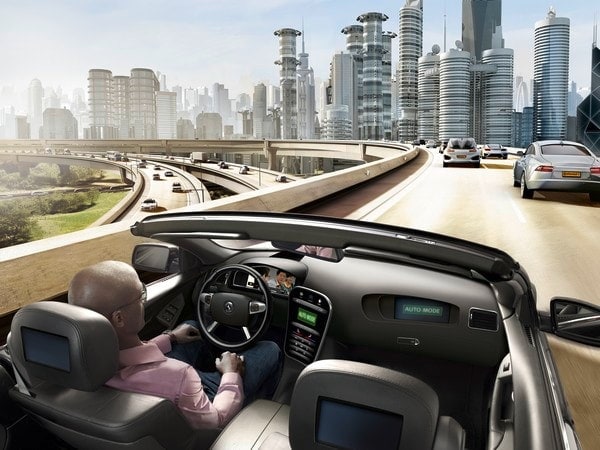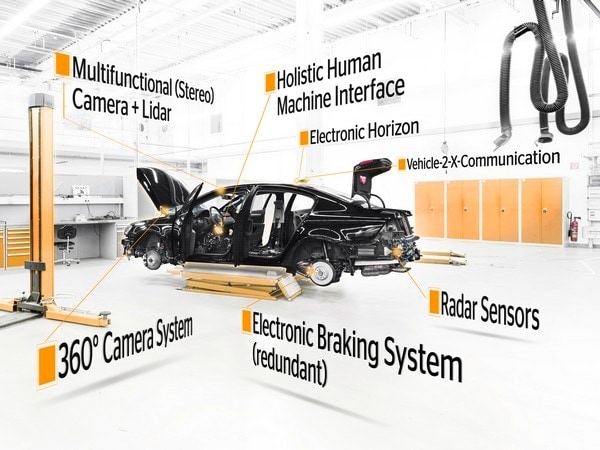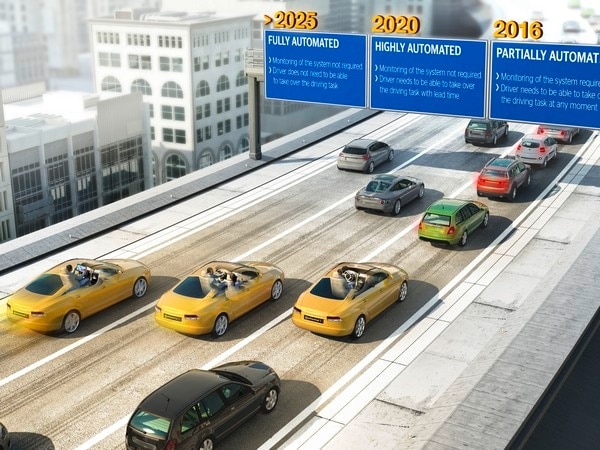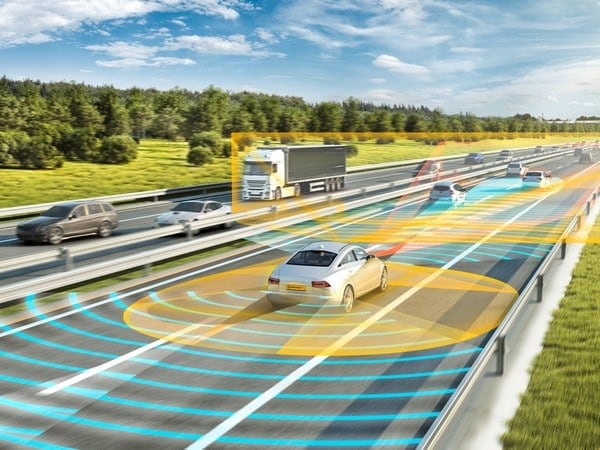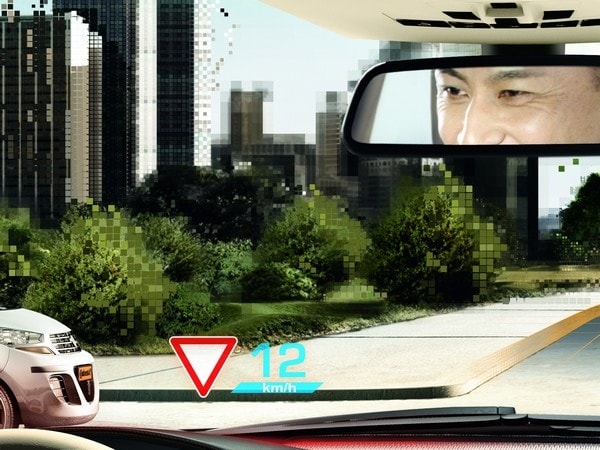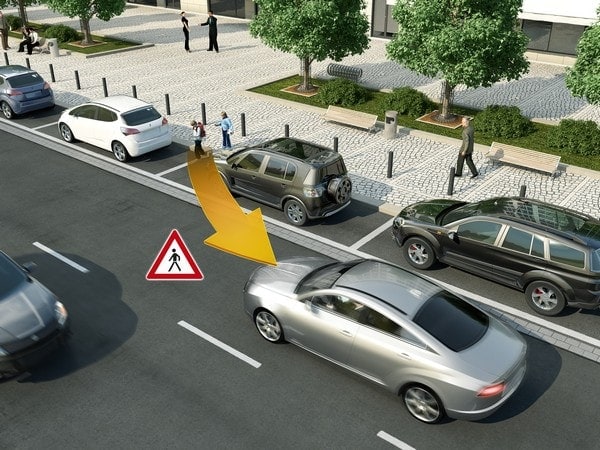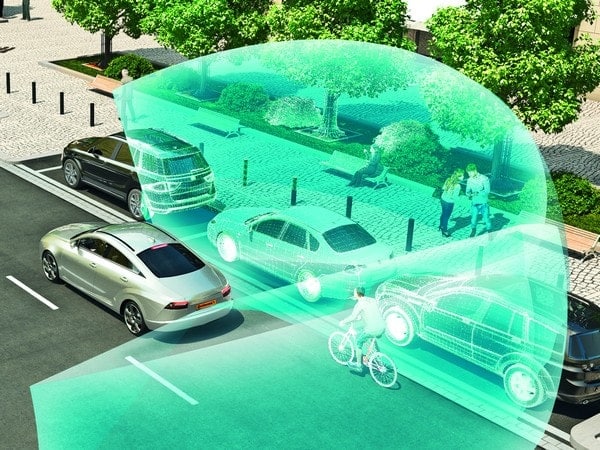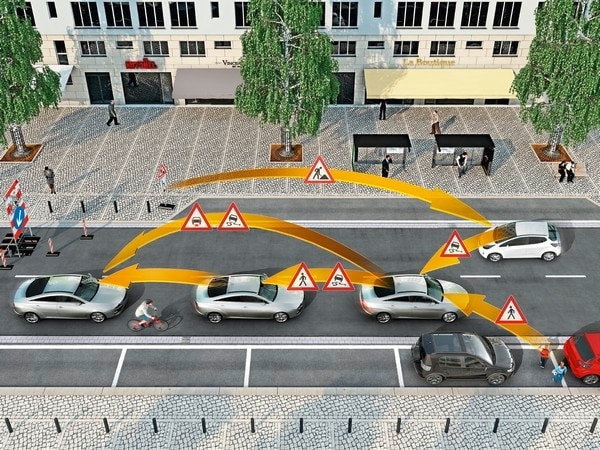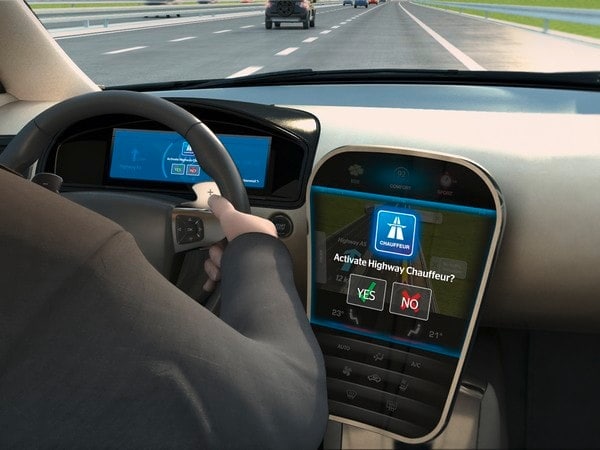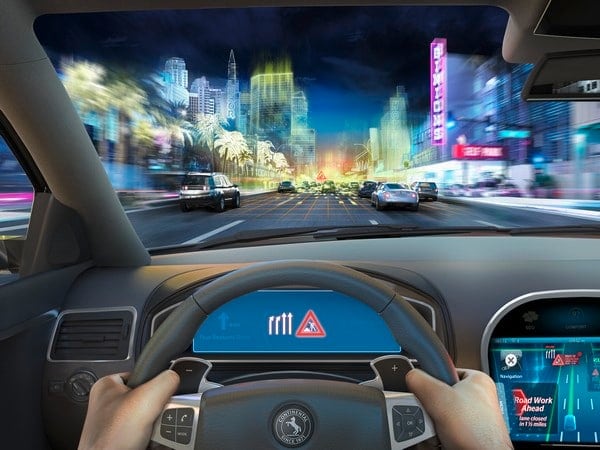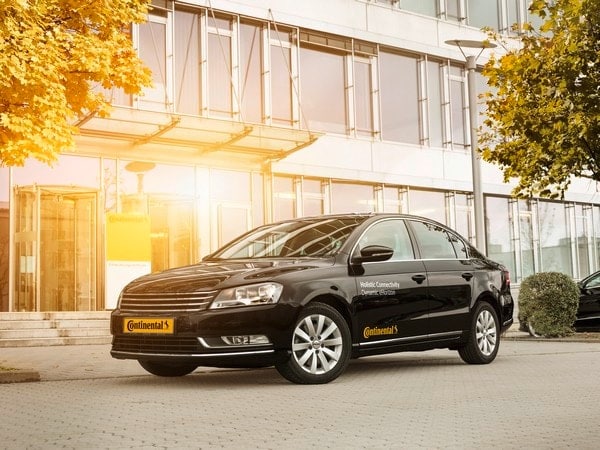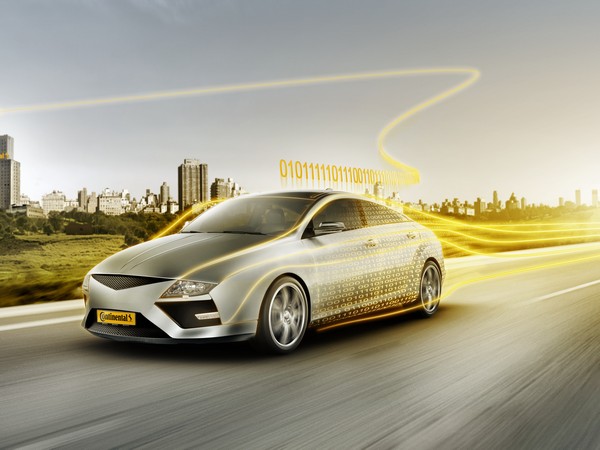
As most of us have noticed, today’s auto industry is racing headlong toward autonomous vehicle operation. This intense competition may one day yield blessings for the elderly and handicapped and those who see driving as a chore. (Maybe not so much for those of us who enjoy driving and take pride in doing it well.)
An increasing number of cars and trucks today feature active cruise and lane-keeping features that let them guide themselves down the freeway for a few seconds, before reminding drivers to put their hands back on the wheel. Some can safely stop-and-go on their own in creep-along traffic. But it will be a few more years (some say 2020) before any fully autonomous vehicles become available, and when they do, how safe and affordable will they really be?
And even if self-driving vehicles someday dominate our roads, they will have to safely operate within the existing fleet of human-driven cars and trucks for many years to come. Not to mention pedestrian swarms, unplanned obstacles in cities and everything from slow-moving tractors to children and animals of all shapes and sizes on rural and country roads.
More development needed
So before we can jump into a transportation pod without a steering wheel or pedals and trust it to take us safely and efficiently where we’re going, a whole lot more development must be done on the various sensors, processors and actuators that will enable it to see, hear, analyze and react to everything around it. “To allow automated vehicles to assume control from drivers,” says global technology supplier Continental, “the vehicle must continuously acquire, process and interpret data while acquiring and building up contextual knowledge.”
In developing and producing systems and components for automated driving worldwide—including in Europe, China and Japan—Continental says it is working on six building blocks: sensor technology, cluster connectivity, human machine dialog, system architecture, reliability and perhaps most important of all, public acceptance. “The aim is to achieve an understanding of the vehicle’s surroundings [that] is as good as or better than a person’s own understanding,” says Karl Haupt, head of the Advanced Driver Assistance Systems business unit. “More range, more sensors and the combination of acquired data with powerful computer systems will help to sharpen the view and is the key to achieving a consistent view of our surroundings.”
Also: Kelley Blue Book Best Buy Awards of 2017
LIDAR leads the way
One essential element of Continental’s automated driving system is High Resolution 3D Flash LIDAR, which uses a highly integrated receptor chip to record the shape, size and distance of everything a laser beam “illuminates” (like a camera flashbulb) around a vehicle up to two football fields away. “In this way,” says Arnaud Lagandre’, head of Continental’s High Resolution 3D Flash LIDAR segment, “a complete 3D model of the vehicle surroundings…over 200 meters away and as close as a few centimeters is constructed in just 1.32 microseconds, 30 times per second.” He adds that the flash LIDAR unit’s low complexity and high industrial feasibility will enable them to be mounted all around a vehicle to provide complete, real-time, 360-degree images of its surroundings.
Another is an “Assisted and Automated Driving Control Unit” that evaluates and interprets all the acquired data to build a comprehensive surroundings model. “[This] is a central element for implementing the required functional safety architecture and…a host for the central environment descriptions and driving functions needed for automated driving,” says Continental Assisted & Automated Driving Control Unit product group head Michael Zydek.
Automated steering and braking
Still another is steering and braking control of the vehicle itself, so Continental has teamed with Nexteer Automotive in a joint venture to develop advanced motion-control systems and actuators. “[This] will perfectly complete our product portfolio for automated driving,” says Chassis and Safety Division president (and Executive Board member) Frank Jourdan. “As a technology leader in the areas of assisted and automated driving, Continental will now combine its talent and expertise with Nexteer’s advanced steering system competence to create the best integrated systems…for automated driving applications.”
This joint-venture team will work on enhanced by-wire development and integration of braking and steering systems while creating common safety architectures and strategies for operationally safe systems, Nexteer Global Engineering senior vice president and its chief technology and strategy officer Frank Lubischer explains: “This arrangement will create a way for both of our companies to collaborate on integrating state-of-the-art electronic brake and steering systems to achieve ideal vehicle dynamics and safety.”
Also: Class of 2018 – New Cars Ready to Roll
Complete package
Continental’s stated goal is to offer a “scalable family” of products for both assisted and fully automated driving that meets the most stringent safety requirements by 2019. For assisted driving, this means a scalable control unit for advanced driver assistance systems. For fully autonomous driving, a powerful computer that meets all the requirements of highly automated driving is required.
So, while most of us would welcome some level of automated driving in especially tiresome conditions such as limited-access freeways and stop-and go traffic, a lot more work is needed before we’ll be willing and able to hand over full control of vehicles to an all-knowing, all-seeing computers with the necessary array of sensors, processors and actuators. And it’s reassuring to know that suppliers like Continental and Nexteer (among others) are working hard to design, develop and validate the systems that will ultimately make it happen.
